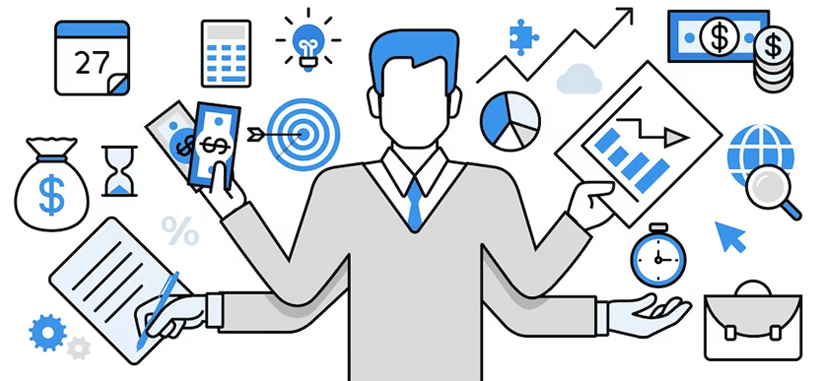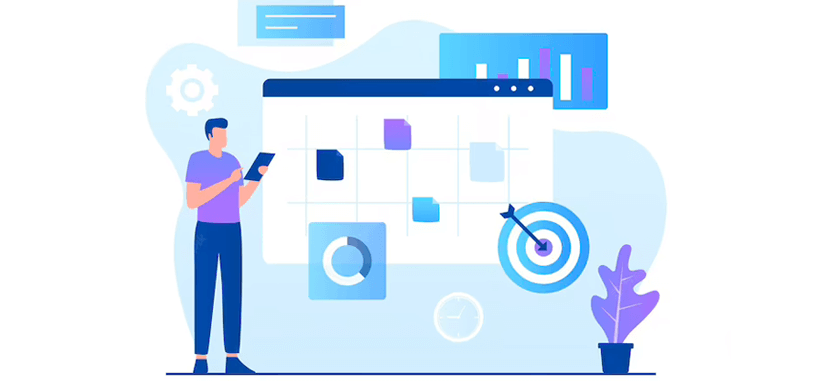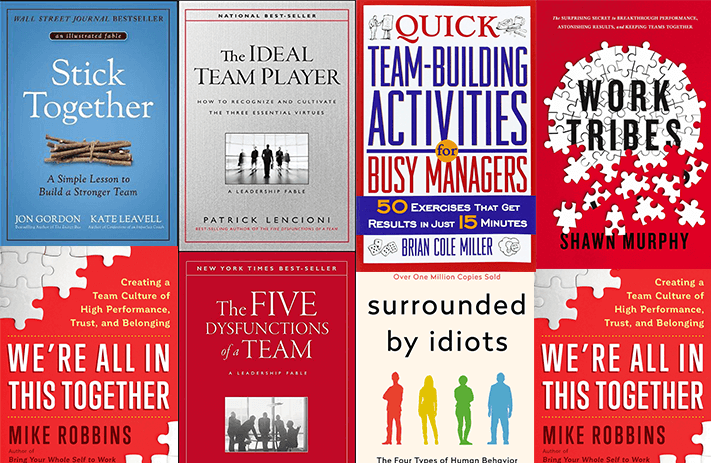
Click the button to start reading
Project Controls 101: A Roadmap to Successful Project Delivery
Have you ever wondered how successful businesses manage their projects so effectively?
The secret to their success often lies in their project controls strategy.
Project controls are the integrative approach of managing a project’s schedule, cost, and quality to meet the desired objectives.
When done right, they can help mitigate risks, manage costs, and ensure a project’s successful delivery.
At the heart of project management, project controls are the data gathering, management, and analytical processes used to predict, understand and constructively influence the time and cost outcomes of a project. It’s about ensuring that everything runs smoothly, stays within budget, and is completed on time.
In this article, we’ll dissect what project controls are, why they’re a game-changer for businesses, and how you can create a project control plan of your own.

What Are Project Controls?
If you’ve ever managed a project or led a team, you’ve likely encountered the term “project controls”. But what exactly are they?
And how can they guide you toward successful project completion?
In simple terms, project controls are data-driven processes and procedures used by project managers to guide a project from its inception to its completion.
It’s all about mitigating risks, managing costs, and keeping the project on track and within scope. They’re like a navigational system, helping you course-correct and steer your project toward its desired objectives.
Project controls encompass a wide array of aspects that collectively ensure the smooth execution of a project. These include scheduling, cost management, quality assurance, and risk management, among others.
- Scheduling: Effective scheduling is all about ensuring the project stays on track and is completed within the designated time frame.
- Cost Management: Project controls help ensure that the project does not exceed its budget. They provide processes for forecasting, managing, and controlling project costs.
- Quality Assurance: Quality assurance protocols within project controls ensure that the project’s outcomes meet the established standards and expectations.
- Risk Management: Risk management involves identifying potential risks, assessing their impact, and devising strategies to mitigate them.
Implementing project controls involves a consistent and disciplined approach.
The project control cycle typically follows these steps: Plan, Collect, Compare, Determine, and Correct.
- Plan: Start by creating a detailed plan that outlines the project’s scope, cost, timeline, and expected quality.
- Collect: Gather data regularly about the project’s progress, including time spent, resources used, and milestones achieved.
- Compare: Compare the collected data with your initial plan to identify any discrepancies.
- Determine: If discrepancies are found, figure out their causes. This could involve diving into the data or speaking with team members to understand the root cause.
- Correct: Finally, take corrective action to address the discrepancies and get the project back on track. This could involve adjusting your plan or implementing new strategies.
Project controls are a project manager’s best friend. They help keep projects from straying off course, ensure they stay within budget, and help identify and mitigate potential risks.

Understanding the Power Dynamics: Project Controls vs Project Management
To truly comprehend the role of project controls, we need to understand their place within the broader landscape of project management.
Are project controls and project management the same thing? Or are they entirely different?
The answer, it turns out, lies somewhere in between.
Think of project management as a ship sailing towards a destination—the successful completion of a project.
Now, project controls are like the ship’s compass and navigational charts—they guide the journey, providing vital data and direction to ensure that the ship doesn’t veer off course.
In more concrete terms, project controls provide the tools and techniques to plan, monitor, and adjust projects as they progress. They help project managers make informed decisions and take corrective action when necessary.
They aid in identifying potential risks before they become costly problems, ensuring the project stays within the set budget and timeframe and that it meets the required quality standards.
Project Controls vs Project Management
Although project controls and project management are deeply intertwined, they are not the same. Project management is an overarching discipline that includes initiating, planning, executing, controlling, and closing projects. It involves handling resources, managing teams, and communicating with stakeholders.
On the other hand, project controls are a subset of project management, focusing specifically on controlling project cost, schedule, scope, and quality. It’s the “controlling” portion of project management.
While project controls form an essential part of project management, they represent only one piece of the puzzle. It’s the synergy between project controls and the other aspects of project management that leads to the successful completion of projects.
Project management sets the strategy, and project controls keep the strategy on track. Together, they create a solid foundation for effective project execution.

Understanding the Different Types of Project Controls
To manage a project effectively, you need to keep multiple balls in the air. It’s like being the ringmaster in a circus—monitoring different aspects, making sure every performer is doing their job, and ensuring the show goes on smoothly.
Project controls are your best friends in this situation, helping you navigate through the complexity. Let’s look at some of these in detail.
Project Management Controls
First, let’s talk about project management controls. These are the processes that keep your project on track, ensuring it stays aligned with your project controls plan. They involve establishing clear objectives, identifying potential risks, and setting up mechanisms to monitor and adjust project performance.
These controls can include schedule management to keep tasks on track, risk management to anticipate and mitigate potential issues, and scope management to ensure the project stays within its defined boundaries.
Example: Let’s say you’re managing a project to develop a new software application. Your project management controls might involve regular status meetings to monitor progress, a risk register to keep track of potential issues, and a change control process to manage any changes to the project scope.
Project Cost Controls
Keeping a project within budget can be one of the most challenging parts of project management. That’s where project cost controls come in. These processes help you monitor and manage your project’s costs to ensure they stay within your budget.
Cost controls might involve estimating and budgeting, cost tracking, financial reporting, and change control. These practices allow you to keep a close eye on your project’s financial health, make adjustments as necessary, and keep stakeholders informed about the project’s financial status.
Example: If you’re overseeing a construction project, your cost controls might involve detailed cost estimates, regular reviews of actual costs versus budgeted costs, and processes for approving and tracking any changes that might affect the project’s cost.
Quality Controls in Project Management
These processes help ensure your project’s outputs meet the required standards and stakeholder expectations. Quality controls are all about maintaining the integrity of your project, promoting continuous improvement, and striving for excellence.
Quality controls can involve setting quality standards, inspecting project deliverables, and monitoring and improving processes to increase efficiency and effectiveness.
Example: In a product development project, quality controls might involve setting clear product specifications, conducting regular product inspections and tests, and using customer feedback to identify areas for improvement.
Understanding and effectively implementing various project controls—management, cost, and quality—is essential in steering your project toward its successful completion. They not only bring stability to your project but also ensure that it is cost-effective and meets the desired quality standards.

Finding the Right Project Control Software
It’s hardly surprising that we’re seeing a rise in digital solutions geared toward project management and controls. More businesses are turning to the online world, and significant investment has been made in digital tools to make project management a breeze.
Among the myriad of software available, project controls software stands out, offering a host of benefits from task automation to real-time insights, all aiming towards enhanced project control efficiency and effectiveness.
Project controls software, by design, assists in managing and controlling different project aspects. It comes with an array of features and functionalities that streamline a wide range of tasks.
Let’s see how it does that:
- Automated Data Collection: Software solutions efficiently gather and consolidate data from various sources, reducing the need for manual data entry and the risk of errors.
- Real-time Tracking and Reporting: They provide real-time updates and comprehensive reports on critical project metrics, enabling informed decision-making.
- Collaboration Tools: They foster improved communication and collaboration among team members, ensuring all are aligned towards common project objectives.
- Predictive Analytics: Advanced software tools leverage predictive analytics, offering valuable insights into potential issues before they snowball into major problems.
By utilizing the power of project controls software, project managers can focus more on strategic decision-making and less on administrative tasks, leading to better project outcomes.
Among the numerous project controls software options available, Teamly has emerged as a reliable tool tailored for remote teams. With its rich features and user-friendly interface, it’s designed to handle the unique challenges that come with managing remote projects.
Here’s a rundown of some of its standout features:
- Real-time chat: Teamly facilitates immediate communication between team members, promoting quick resolution of issues and seamless information sharing.
- Workflow & Task Management: Teamly’s robust task management tools allow for efficient organization and tracking of tasks, helping keep your projects on track.
- Screen Capture Video & Audio Recording: This feature allows for better communication and clarity of instructions, particularly useful in a remote work setting.
- Employee Time Tracking: With Teamly, you can track the time spent by employees on specific tasks or projects, supporting accountability and productivity.
- Ready-to-use Templates: Teamly offers pre-made templates for project tracking, team collaboration, and complex workflow management, simplifying the project setup process.
- No Learning Curve: One of Teamly’s significant advantages is its intuitive interface, which makes it easy to navigate even for first-time users.
In the vast sea of project control tools, Teamly stands out for its focus on remote team management and user-friendly design.
So, if you’re dealing with a remote team and are in need of a comprehensive project controls solution, give Teamly a try.

Creating an Effective Project Control Plan
The cornerstone of successful project control is undoubtedly a well-constructed project control plan. Essentially, this document lays out how project controls will be applied throughout the project lifecycle.
If you’re wondering how to get started on creating one, don’t fret. Below, we’ll delve into the steps you can take to devise an effective project control plan, along with some key considerations to keep in mind along the way.
Step 1: Define Your Project Goals and Objectives
Your journey towards an effective project control plan starts by outlining your project’s goals and objectives.
- What exactly are you aiming to accomplish?
- How will you define success?
These may seem like basic questions, but they provide a blueprint for your project. Every activity you undertake should be geared towards achieving these goals and objectives.
Start with broad objectives and break them down into smaller, more manageable goals. For instance, if your objective is to develop a new software product, a goal could be to complete the initial design phase by a specific date.
Make your goals clear, measurable, and time-bound. Remember, objectives are the ‘what’, goals are the ‘how’.
Step 2: Identify Key Performance Indicators (KPIs)
Once you’ve defined your goals and objectives, identify the Key Performance Indicators (KPIs) that will help you track your progress. These should be metrics that accurately reflect the success of your project. They could include project completion percentage, actual cost vs. budget, project timeline, and quality measures.
Make your KPIs SMART – specific, measurable, achievable, relevant, and time-bound.
For instance, instead of a vague KPI like ‘improve project efficiency’, try something more specific like ‘reduce project completion time by 10% within 6 months’.
Step 3: Determine Control Processes
Establish which control processes will be used to manage each aspect of your project. This could include cost control methods, quality control procedures, risk management strategies, and more. The purpose of these processes is to keep your project on track and mitigate any risks that could derail it.
Document each control process in detail.
- Who is responsible for implementing it?
- When should it be used?
- What tools or resources are required?
Define these clearly to avoid any confusion or miscommunication.
Step 4: Detail Reporting Procedures
Create clear reporting procedures to keep all stakeholders informed about the project’s progress. Decide on the frequency of reports, the data they should contain, and who will receive them.
Regular and thorough reporting allows for the early identification of potential issues and aids in informed decision-making.
Define a standard reporting template to maintain consistency. Use visual aids like graphs and charts to make data more understandable.
Leverage project management tools like Teamly to automate the reporting process and keep all stakeholders in the loop.
Step 5: Implement Review Cycles
Set regular review cycles to evaluate your project’s status against your defined KPIs. These reviews offer an opportunity to adjust control processes as needed and make sure your project is on the right path.
Make review cycles a priority. Schedule them in advance and make attendance mandatory for relevant team members.
Use these meetings as a platform for open discussion and brainstorming.
After each review, document key findings and any changes to be made and assign tasks to specific team members. This keeps everyone accountable and ensures the continuous improvement of your project.
Tips for Creating a Great Project Control Plan
When crafting your project control plan, bear in mind the following:
- Flexibility: Your plan should be flexible enough to accommodate any changes or unforeseen circumstances that may arise during the project lifecycle.
- Stakeholder Involvement: It’s crucial to involve key stakeholders in the creation of your project control plan. Their input can provide valuable insights and promote buy-in, which is crucial for the plan’s successful implementation.
- Communication: Communication is a vital aspect of project control. Ensure your plan includes clear communication processes, including how updates will be shared and how feedback can be provided.
- Utilizing Technology: Consider how project controls software, like Teamly, can be used to automate and streamline your control processes.
By following these steps and considering these factors, you’ll be well on your way to crafting a comprehensive project control plan that will guide your project toward successful completion.
Project Control Best Practices
Following best practices can help streamline your project control efforts, making them more effective and efficient. Let’s explore some of these best practices:
- Early Engagement: Start thinking about project controls from the very beginning of your project. This allows you to plan your resources and set up processes effectively, which can help prevent potential problems down the line. It also ensures that everyone on the team understands the importance of project controls and is committed to their successful implementation.
- Regular Monitoring and Reporting: Regular monitoring is crucial to identify potential issues before they escalate. Set up a regular reporting schedule that keeps all stakeholders updated on the project’s progress. This helps in making informed decisions, allows for early problem detection, and fosters an environment of transparency.
- Use of Technology: Leverage project management tools and software, like Teamly, to streamline your project controls. These platforms can help with task management, communication, documentation, reporting, and more. They save time and reduce the chance of errors, making your project controls more efficient.
- Risk Management: Identify potential risks and have a plan in place to manage them. This includes both external and internal risks. By proactively addressing risks, you can help ensure that your project stays on track even when unexpected events occur.
- Continuous Learning and Improvement: After the completion of a project, conduct a post-project review to evaluate the effectiveness of your project controls. What worked well? What didn’t? Use this feedback to continuously improve your project control processes for future projects. This practice of learning and refining processes is key to ongoing success.
- Ensure Clear Communication: Clear and open communication is a must for effective project controls. Make sure everyone knows their roles and responsibilities, the goals and objectives of the project, and how their work contributes to these objectives. Regular team meetings, one-on-one discussions, and effective use of communication tools can facilitate this.
By implementing these best practices, you can enhance the effectiveness of your project controls and help ensure the successful execution of your projects. Remember, the ultimate goal is to deliver a project that meets its objectives on time and within budget while maintaining quality standards.
Conclusion
Each project is unique, with its own goals, challenges, and dynamics. Therefore, your project control strategies should be flexible and adaptable, tailored to suit the specific needs of your project.
Whether you’re using project management software like Teamly, creating a detailed project control plan, or striving to follow best practices, remember to stay proactive.
Anticipate potential problems and have a plan to address them. Regularly review and improve your project control processes because what worked yesterday might not work tomorrow.
















